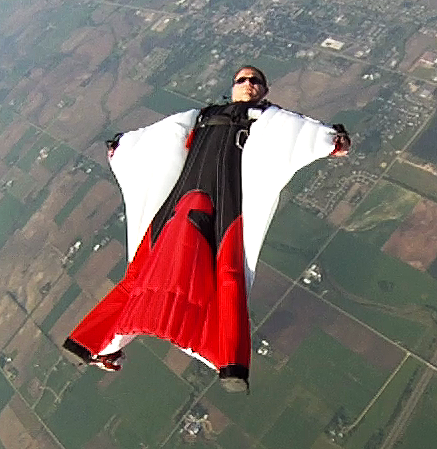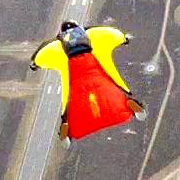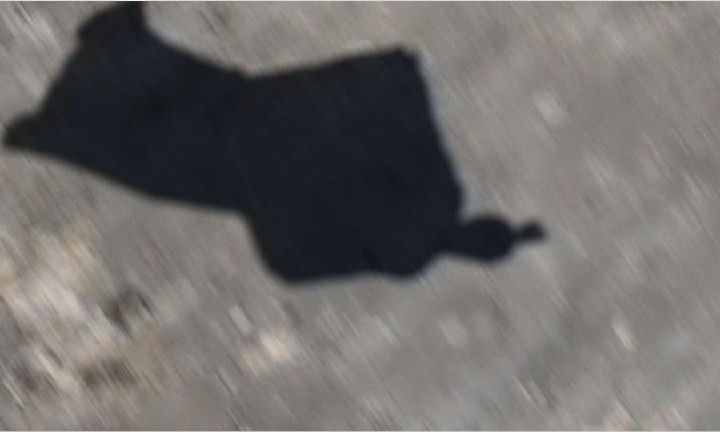In retrospect, I think all the time I spent analyzing gps and neptune data was a waste of time.
Kris
In theory yes and I agree if you have a really tall object, good weather, easy landing area , you are an experienced wingsuit BASE jumper thats not easily overwhelmed and distracted and the jump isn't overly technically difficult.
Its just that skydives are not as demanding as any kind of BASE jump. They offer much more working time for benchmarking in a less stressfull environment.
The111 1
Quote
They offer much more working time for benchmarking in a less stressfull environment.
This forum, in a similar fashion, offers much more bitching time in a more stressful environment.
offers much more bitching time in a more stressful environment. ![]()
If this is stressful you are not bitching correctly.
lurch 0
The suit flies best if its pulled tight but you're not. Everything else said about legs locked and toes pointed is spot on accurate... the tail on a 6 isn't all that big, but if you get your body flat as a plank and wide as you can, then relax, while keeping it as wide as possible, you can get a lot of "drivey float." Also suggest pulling up and out a bit with your elbows. If you're flying flat and deliberately hunch your shoulders and lift up and out with your elbows, you'll probably go a bit head-high and get a burst of VERY low fallrate. That will stall if you overdo it, but if you then stick your legs out and get super flat, drop your head and tilt over slightly headfirst, you'll still be flying floaty but begin to seriously haul ASS. Stay that way the entire jump, keep your turns very flat, wide and shallow- I suggest digging in slightly with a wingtip, hand or toe doesn't matter, whatever best suits your sense of balance, rather than turning by banking your whole body. Digging in with a wingtip adds drag which costs you, but the spillage sacrifice from all but the most gentle of banked turns is far far worse. If I'm trying for airtime I keep all control inputs very very subtle.
Anyway if you're under 180 lb out the door and not of short squat body type you should be able to manage high 40's with practice. If you're in the 140-160 lb range (I'm about 140 without gear, 160 exit weight give or take 5 lbs) mid-40's is doable, low 40's would be an "everyday flying" limit and high-mid 30's can be had if you learn all the ninja tricks and use all of them all at once on a good day.
I'd also suggest asking Taya Weiss, might have a few pointers for you, shes been flying an old S3s for some time now and will claim 40, but I've seen her do high 30's long-duration burst cruise more than once. For all I know she could have kept that up for half the jump if she'da felt like it. When we ran out of altitude she didn't look like she was gonna stall it anytime soon.
-B
lurch 0
The handling feels different and the exact body position to produce a given result changes a bit when it fits tighter but the fallrates are the same.
Are you sure all movements you made in your comparisons were the same? I.E. might have been arching a bit, or looking up or not as flat? I haven't flown a Firebird, just a Classic, Classic2, GTI, S3 and S6 plus a few homemade hacks and Tony suits but one common characteristic to all 3 suits in what used to be the medium/large range is that rotating your elbows forward IS one of the ninja tricks. Theres a bunch of ways to describe movements that get the same effect... If you thought of it as "pushing the front of the wing down" the result of holding your arms out like that and pressing down is.... your chest comes in your head drops you roll your shoulders and you sort of rotate your elbows forward.
If I told you to suck in your chest and roll your shoulders,
You'd wind up doing that same thing with your elbows.
If I told you to get as wide as you can and then cup air like mad, without bringing your hands below your waist it'd kinda force your skeleton into a particular shape, and once again you arrive at that hunchy-arched back position, with your elbows kinda forward.
The S-6 isn't radically different or THAT much bigger than a Firebird, not proportionally. In an old GTI my best sustained cruise was 44. Most of the same techniques on a 6 got 38 repeatably, 35 sometimes. I've done wingmods on a 6 that go as far down as the ankles with the lower wingtips attached to the toes like little sails and got sustained repeatable 33 cruise, then when I learned to use it, it went off the bottom of the scale and my Neptune didn't record anymore. I stopped flying the extreme version after 50-60 jumps, the fallrate wasn't worth the insane added risk factor but it proved the available fallrates are pretty scalable and predictable based on overall wing area range. This stuff is repeatable.
I'd say hitting 50 is gonna be just barely doable for you in something the size of a 6. If you're already getting anywhere near 50 you're flying it quite well already. A Mach/Blade/Vamp sized suit would get you into the 40's and it IS possible for you to get into the high 30's with something big enough.
-B
KrisFlyZ 0
I'd bet that most people in the 5'10" - 6'2" and around 200lbs got mid 40s in their S3 suits.
Kris
QuoteS6 is big enough for low to mid 40s for him. I am just over 6' 1"(186.5cm) and was 200-210 out the door when flying the S3. Low to mid 40s was normal.
I'd bet that most people in the 5'10" - 6'2" and around 200lbs got mid 40s in their S3 suits.
Float or fly? It does matter....
KrisFlyZ 0
Quote
In theory yes and I agree if you have a really tall object, good weather, easy landing area , you are an experienced wingsuit BASE jumper thats not easily overwhelmed and distracted and the jump isn't overly technically difficult.
If it is an object as you describe, "really tall object, good weather, easy landing area" why does one have to be an experienced BASE jumper to figure things out?
Solos are the best method to figure things out in skydiving, don't you agree?
KrisFlyZ 0
Quote
Float or fly? It does matter....
45+ when flying back on alti hop and pop loads. Low 40s on float jumps.
Actually, I don't think I ever did a full jump that was floating only. The last leg of a float jump was always flying as the focus was to get back to the DZ.
Kris
Quote
If it is an object as you describe, "really tall object, good weather, easy landing area" why does one have to be an experienced BASE jumper to figure things out?
Are you still BASE jumping Kris?
Quote45+ when flying back on alti hop and pop loads. Low 40s on float jumps.
Actually, I don't think I ever did a full jump that was floating only. The last leg of a float jump was always flying as the focus was to get back to the DZ.
You fall rate does not really tell anything about your trajectory.
KrisFlyZ 0
QuoteQuote45+ when flying back on alti hop and pop loads. Low 40s on float jumps.
Actually, I don't think I ever did a full jump that was floating only. The last leg of a float jump was always flying as the focus was to get back to the DZ.
You fall rate does not really tell anything about your trajectory.
Well alti hop and pops are around 4miles flown back in a straight line from DZ and the ground track for the other ones I can only guess was less than 2 miles from exit to opening standard Wingsuit pattern.
Kris
KrisFlyZ 0
QuoteQuote
If it is an object as you describe, "really tall object, good weather, easy landing area" why does one have to be an experienced BASE jumper to figure things out?
Are you still BASE jumping Kris?
Haven't jumped this year, not had the time to skydive or the right gear to justify going back to the mountains. How was your season?
Kris







Initially yes, then you need to make minor adjustments against a benchmark like a buddy, or several, that you've flown with for many many jumps. These small tweaks of your body and reactions is how you will fine tune the suit.
If you primarily do solos and are benchmarking with neptunes or GPS data then there is too great a gap in the trying something-analyzing data- fine tune and retry that it takes much longer to really own the suit.
Or, one can get a pretty good idea by jumping at a well known BASE site.
In retrospect, I think all the time I spent analyzing gps and neptune data was a waste of time.
Kris